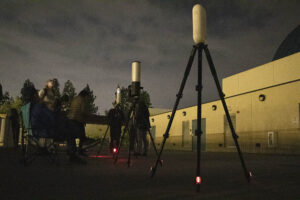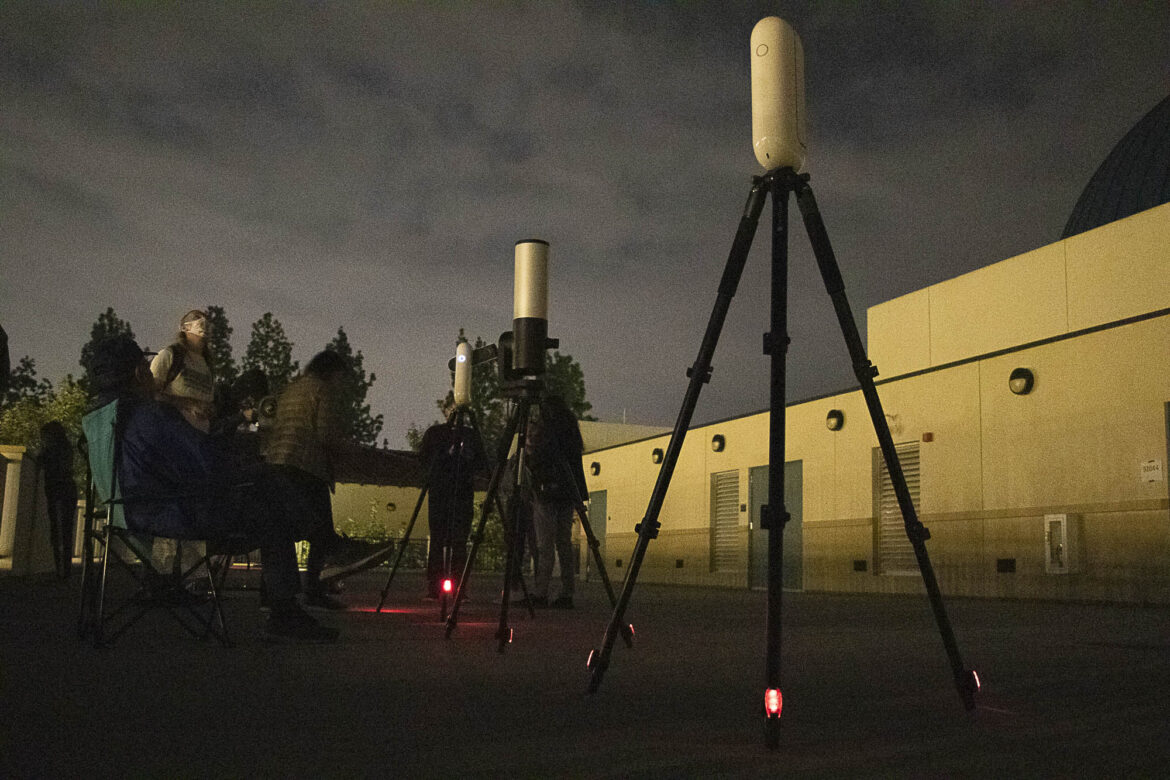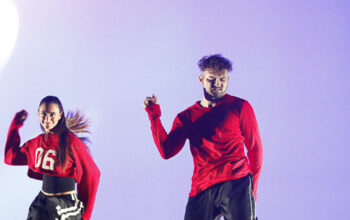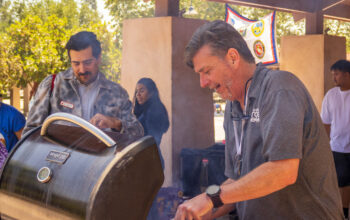She took one step to the right and the young student across from her, about two feet away, did the same, listening closely. She took another few steps to the right, completing about half a circle. The student again duly imitated her footsteps, ensuring they would continue facing each other along their respective paths.
At the first Telescope Night of the semester organized by Astronomy Professor Dale Fields, Iraneide De Oliveira, who has taken astronomy classes at Pierce College and is currently a member of the Los Angeles Astronomical Society (LAAS), used those movements along the circle to demonstrate to a curious student the rotations of the Earth and moon.
“I love showing people the planets and explaining it to them,” De Oliveira said. “Because when they’ve never looked through a telescope before, it’s amazing. And you kind of go, ‘Oh, it’s beautiful.’ And that’s one of the things that really keeps me going to star parties.”
Four telescopes—three electronic ones brought by members of the LAAS and one manual telescope—were set up on the patio for all to explore, including students and members of the local community.

The views that can be seen through the telescopes can depend on the weather which, for this Telescope Night, was moderately cloudy with shifting pockets of clearer skies.
“The main thing we can look at right now is going to be the moon, so we’re just sort of sticking with the moon,” said Fields, who is also the physics and planetary science department chair at Pierce. “But we do have the ability to actually shift [the telescope] too, we can try to look for other things that are out there.”
Fields added that generally in a Telescope Night, whatever is visible in that season is what they’re going to try to give people a chance to look at.
Philip Taylor, another member of LAAS and for whom astronomy has been in the family since the eighteenth century—and who had driven by Pierce for 45 years but didn’t set foot on the campus until attending one of these events about two years ago—brought along a small, fully automated, refractor-type telescope.
“And what it’ll do is it’ll lock onto a star pattern—it’s got a two million star database in there that it’ll use to register up to the sky,” Taylor said. “And then once I’ve done that, I can look at Saturn or the moon or a galaxy or whatever I want to look at.”
These astronomy events began around 2008, according to Fields, and they work to put on at least two Telescope Nights each semester.
“We’re sort of looking at a different part of the sky—when you’ve got a different season going on,” Fields said. “And since we’ve got our planetarium—also around 2008, 2009—we’ve been trying to get people to come on in and see what’s going on inside our planetarium too. And actually go on trips to the universe and to wherever you’d like to see.”
Film production major Cheli Maxil was originally indecisive about attending the event, but found the experience enjoyable.
“I’ve learned a lot, I’ve seen the moon, even though it’s not that visible right now. I was able to see that a little bit, and some nebulae and whatnot, and I learned a lot about the sun,” said Maxil, who has an interest in astronomy. “It’s really nice and it’s really peaceful. I needed something calm to end my day with.”
Having people look through the telescopes and watch what is happening outside of Earth is one of Field’s favorite elements of the event.
“The moon becomes a place, not just a thing that’s up there, but an actual place,” Fields said. “You can imagine walking there and seeing the different things that are going on there. I’m really excited about getting people a chance—who have maybe never looked in a telescope—to look up there and realize that all these other things are worlds, they’re their own locations and their own histories. Being able to get people to look at that and just realize that there’s more out there than just ‘here’ is the big thing that I really love about Telescope Nights.”




